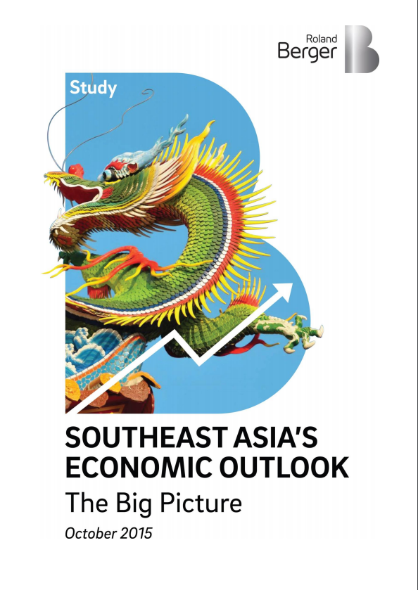Southeast Asia's Economic Outlook – The Big Picture
![{[downloads[language].preview]}](https://www.rolandberger.com/publications/publication_image/bildschirmfoto_2016_06_18_um_09.13.05_1_download_preview.png)
Southeast Asia is an attractive territory: composed of 10 nations having gained independence relatively recently, it is characterized by conflicting trends.


As Southeast Asia with countries such as Vietnam, Singapore and Indonesia becomes an even more important growth cluster, the region will continue to be a magnet for commercial activity, given its growing population and above world-average GDP growth. This study by Roland Berger highlights this conclusion and illustrates that the region is set to grow through intra-region investments.
From 2000-2014, intra-region investments grew 28%, as opposed to investments from outside the region at 12%. This is linked to ever-improving bilateral relations and increasing cross-border migration. Additionally, the establishment of the ASEAN Economic Community (taking effect by the end of 2015) is expected to further boost economic integration and cement the region's strong growth.
According to the study, while the region continues to leverage trade, both external and intra-region, it lags behind in competitiveness, a key obstacle to fully realizing its potential in attracting investments. "ASEAN member countries need to improve their market efficiency and technological readiness in order to enhance their attractiveness. They must continue to develop toward innovation-driven economies," said Anthonie Versluis, Managing Partner, Malaysia, at Roland Berger and co-author of the study. "Additionally, red tape must continue to be reduced to enhance the business environments for countries in the region, especially for CLMV economies," he added, referring to the cluster comprising Cambodia, Laos, Myanmar and Vietnam.

![{[downloads[language].preview]}](https://www.rolandberger.com/publications/publication_image/bildschirmfoto_2016_06_18_um_09.13.05_1_download_preview.png)
Southeast Asia is an attractive territory: composed of 10 nations having gained independence relatively recently, it is characterized by conflicting trends.